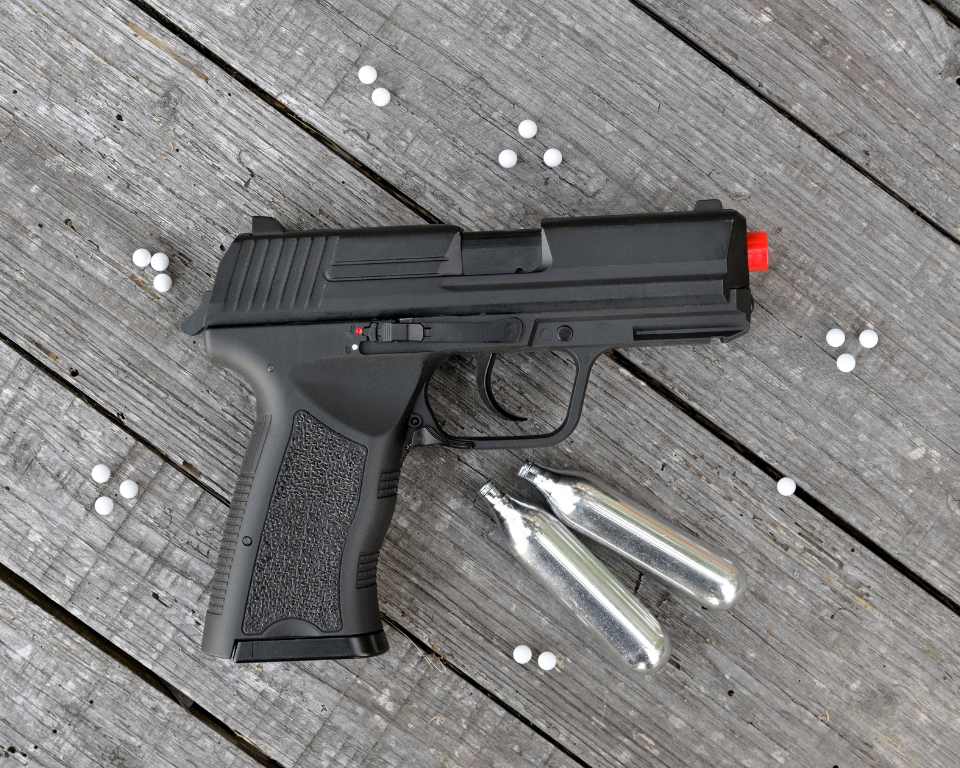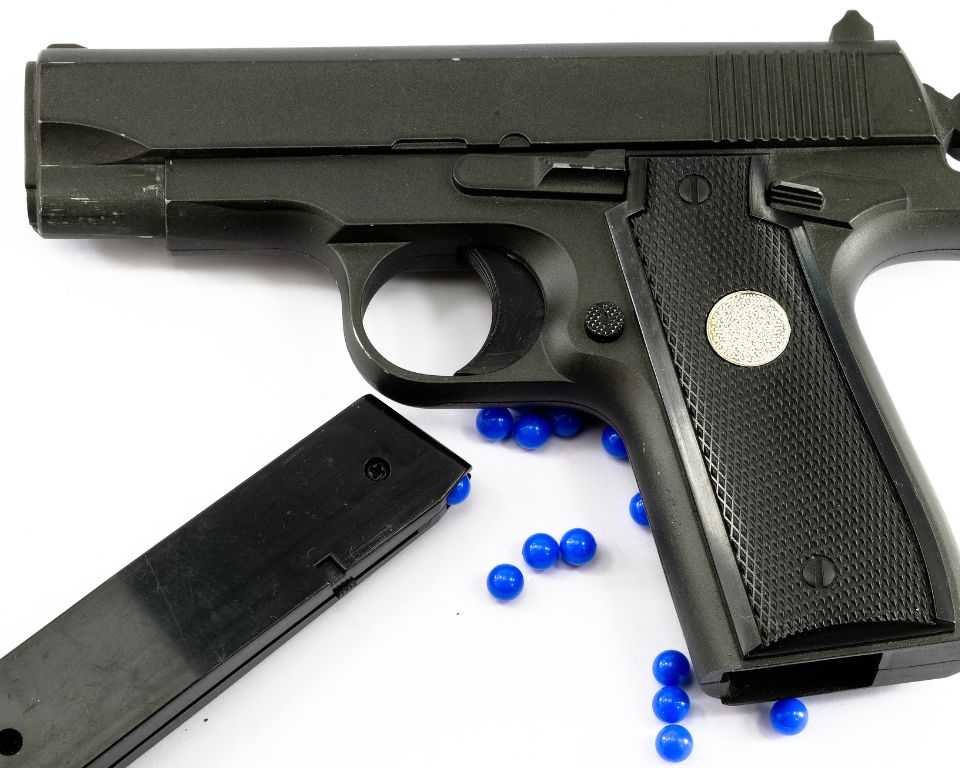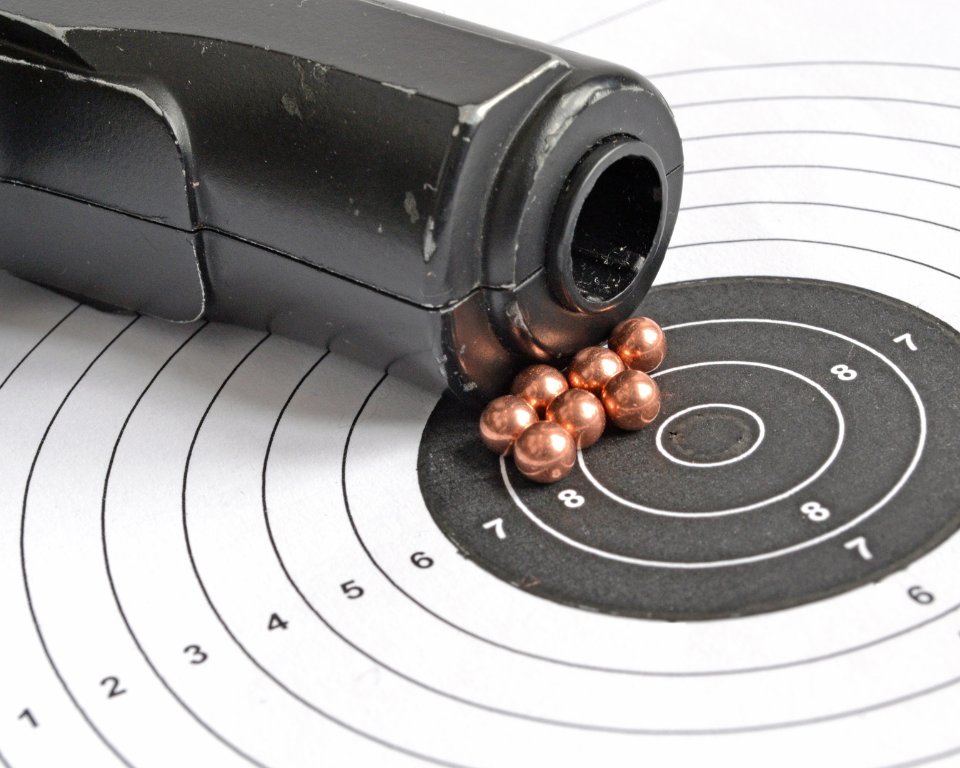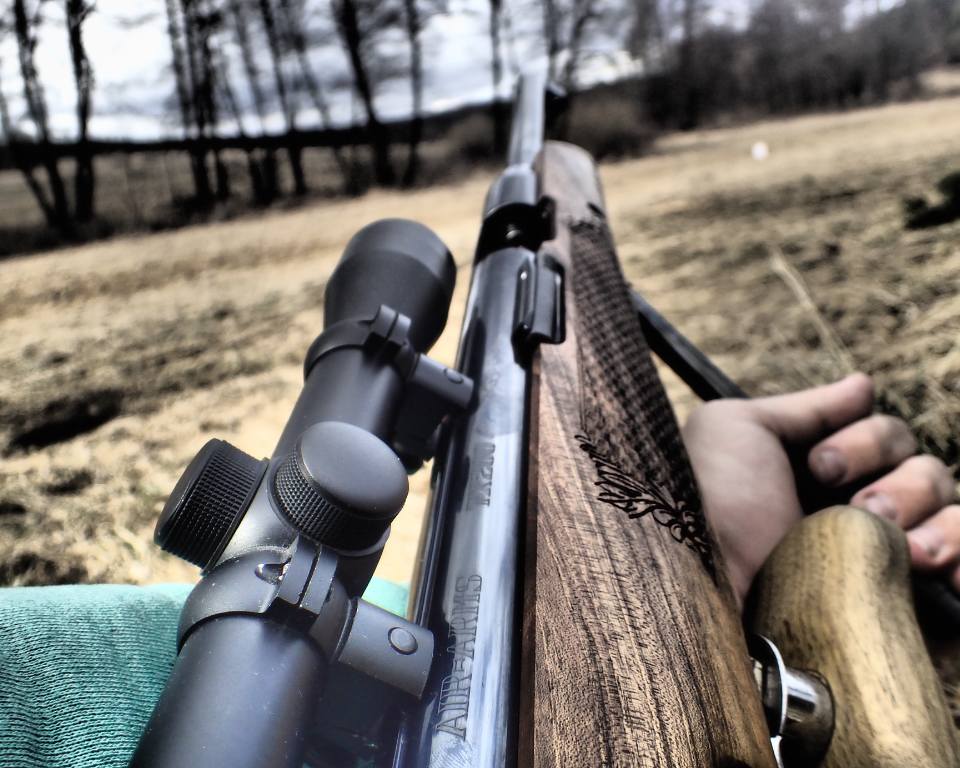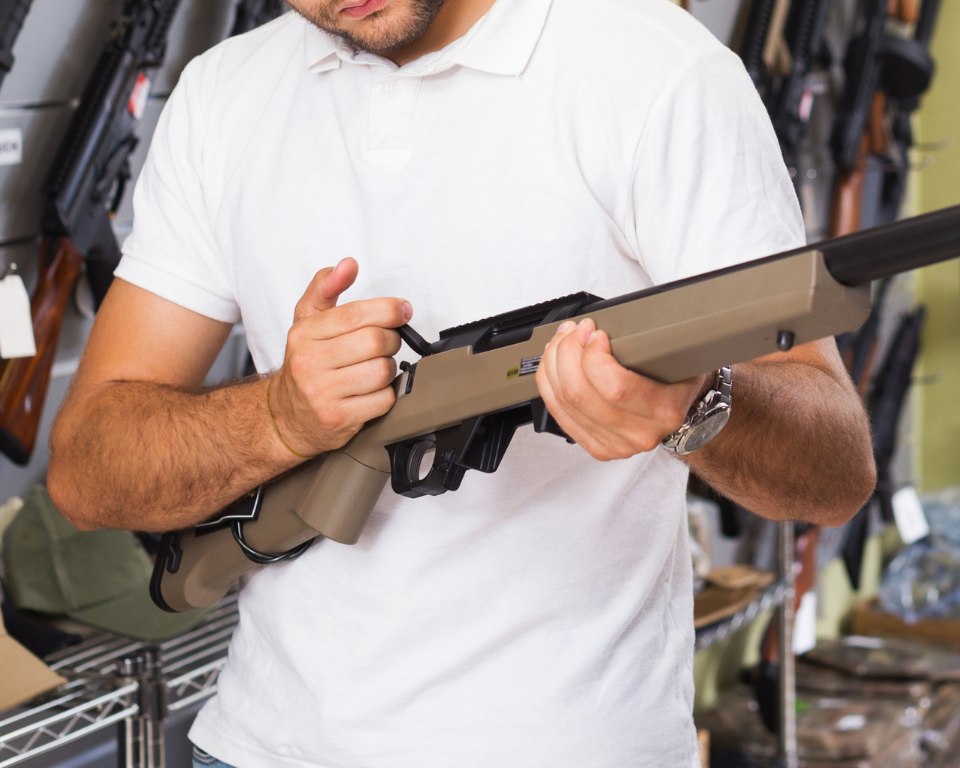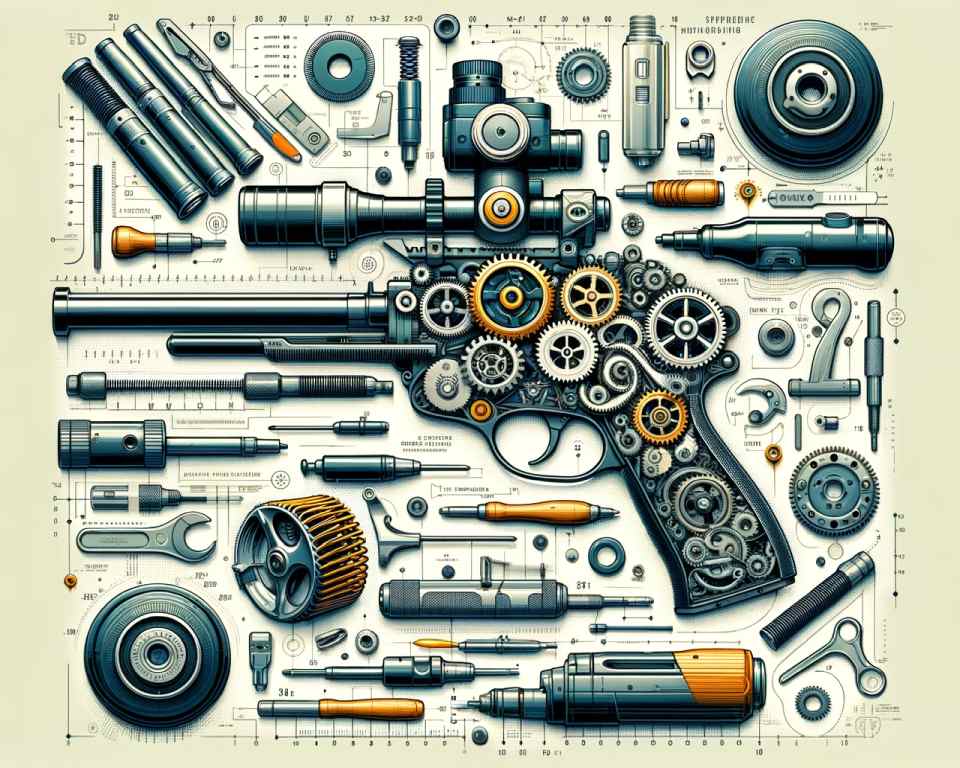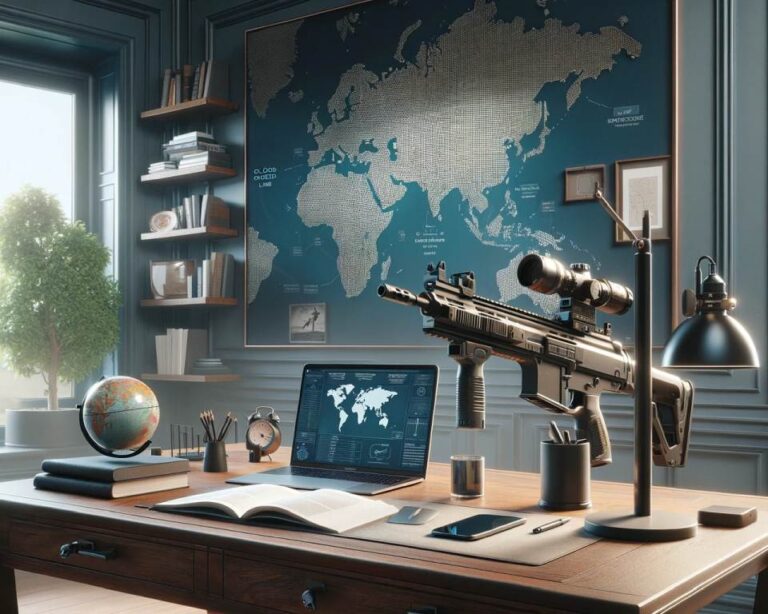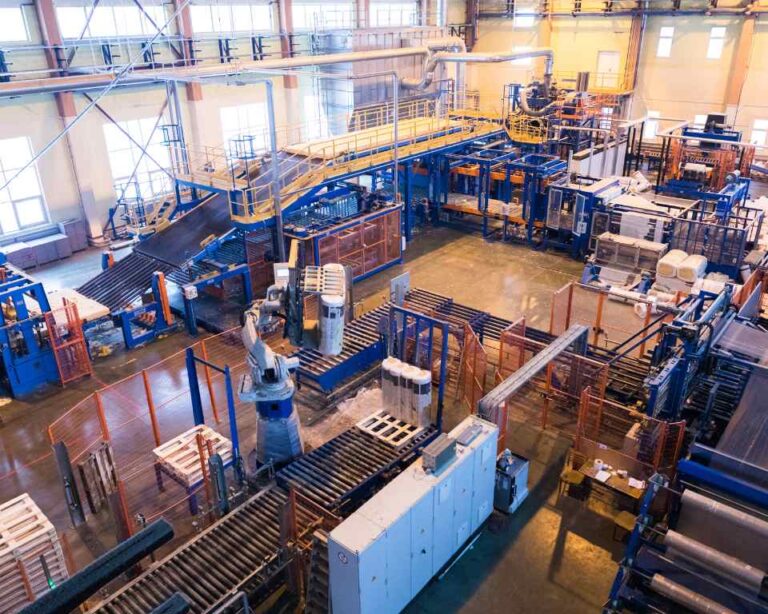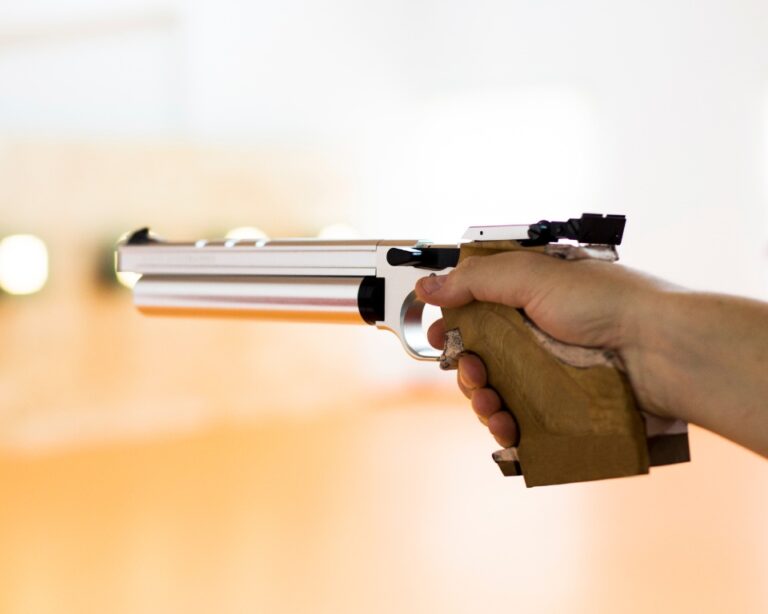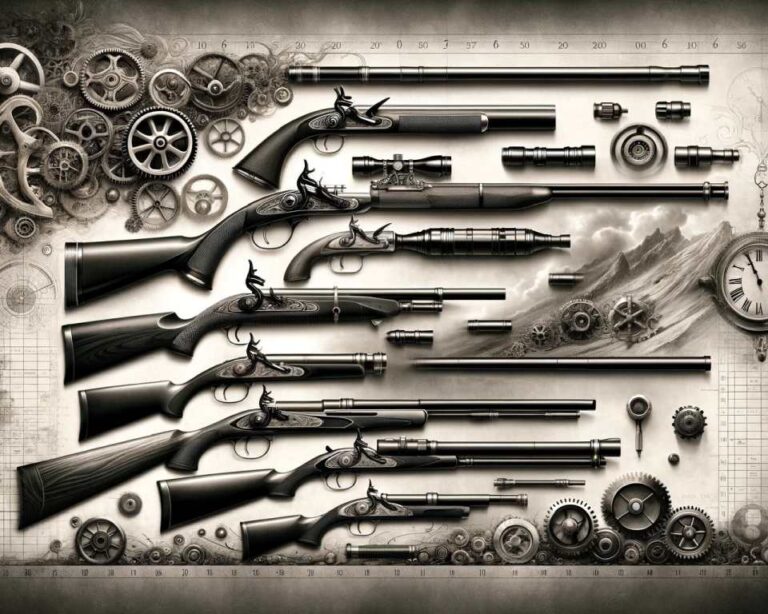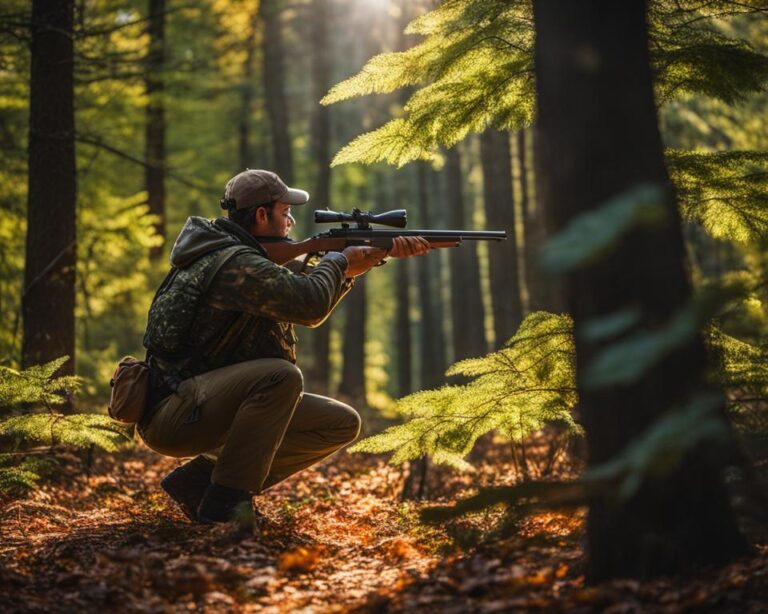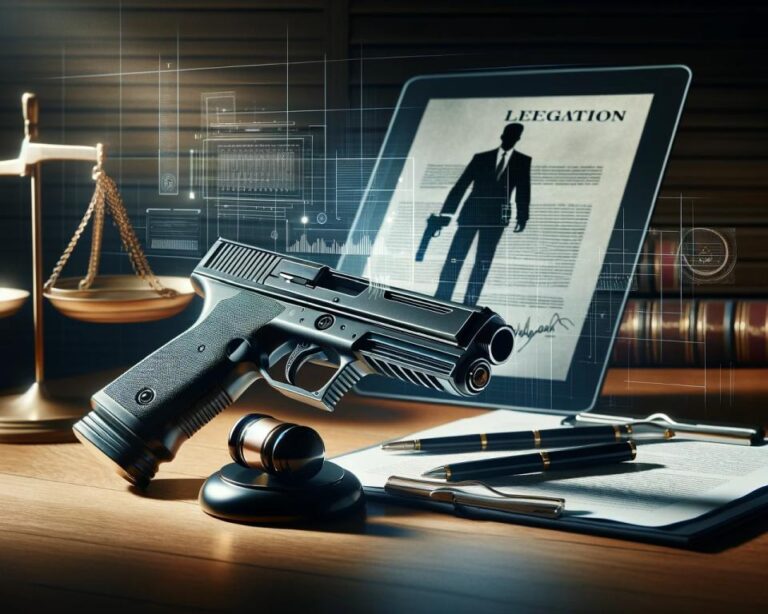Airguns in Focus: Understanding Their Mechanics, Power, and Capabilities
Welcome to our comprehensive guide on airguns! Whether you’re a seasoned enthusiast or just starting out, understanding the mechanics, power, and capabilities of airguns can greatly enhance your shooting experience. From airgun servicing and troubleshooting to customization and upgrades, we’ve got you covered. Let’s delve into the fascinating world of airgun mechanics and explore everything you need to know to make the most out of your airgun.
Key Takeaways:
- Airguns operate by utilizing compressed air as the driving force to propel projectiles with precision and power.
- They have various mechanisms, including spring-piston, pre-charged pneumatic (PCP), and CO2-powered systems.
- Spring-piston airguns rely on manually cocking the gun, while PCP airguns use a high-pressure air reservoir, and CO2-powered airguns rely on CO2 cartridges.
- Airguns have gained popularity due to their accessibility, affordability, skill development opportunities, precision, reduced noise, and environmental friendliness.
- Understanding airgun mechanics is crucial for optimizing performance, servicing, maintenance, and customization.
The Essence of Airguns: How Do They Work?
Airguns operate using a fascinating combination of mechanics and compressed air propulsion. Let’s delve into the inner workings of these incredible devices and understand how they function.
When the trigger is pulled, a series of events is set in motion, resulting in the release of pressurized air that propels the projectile forward. It’s important to note that the specific mechanics can vary depending on the type of airgun.
Spring-Piston Airguns:
In a spring-piston airgun, the process starts when the gun is manually cocked. This action compresses a spring, storing potential energy. When the trigger is pulled, the spring rapidly decompresses, transferring its energy to push a piston forward. As the piston moves, it compresses the air in the chamber, further increasing its pressure. Finally, the highly pressurized air is released, propelling the projectile out of the barrel.
PCP Airguns:
In contrast, PCP (pre-charged pneumatic) airguns utilize a high-pressure air reservoir. These airguns feature a refillable tank that stores pressurized air. When the trigger is pulled, controlled bursts of compressed air are released from the reservoir into the barrel, propelling the projectile with remarkable precision and power.
CO2-Powered Airguns:
CO2-powered airguns operate differently from spring-piston and PCP models. They rely on disposable CO2 cartridges that contain pressurized gas. When the trigger is pulled, the airgun’s valve opens, allowing a controlled amount of CO2 gas to escape into the barrel. As the gas expands, it propels the projectile forward.
Each type of airgun mechanism offers its own unique advantages and shooting experiences. Whether it’s the classic mechanical elegance of spring-piston airguns, the precision of PCP models, or the convenience of CO2-powered options, airguns continue to captivate shooting enthusiasts around the world.

Diverse Types of Airguns: Unveiling the Choices
Airguns offer a wide range of options, each with its own unique mechanisms and advantages. Understanding the different types of airguns available can help you make an informed decision when choosing the best one for your needs.
1. Spring-piston airguns: Also known as “springers,” these airguns rely on a manual cocking mechanism. By compressing a spring, you store energy for firing. When the trigger is pulled, the spring releases its energy, propelling the projectile forward. Spring-piston airguns offer classic mechanics and a satisfying shooting experience.
2. PCP airguns: PCP (pre-charged pneumatic) airguns utilize a high-pressure air reservoir. These airguns provide consistent and powerful shooting with every shot. The air reservoir is filled with pressurized air, allowing for a continuous supply of power. PCP airguns are known for their accuracy and precision.
3. CO2-powered airguns: CO2-powered airguns rely on CO2 cartridges for propulsion. These airguns are convenient and user-friendly, eliminating the need for manual cocking or external air sources. When the trigger is pulled, the gun’s valve releases a controlled amount of CO2 gas, propelling the projectile. CO2-powered airguns are versatile and popular for various shooting applications.
Each type of airgun offers a different shooting experience, catering to different preferences and needs. Whether you appreciate the mechanical elegance of spring-piston airguns, the precision of PCP models, or the convenience of CO2-powered options, there is an airgun type that suits you.
With a clearer understanding of the diverse types of airguns available, you can make an informed decision and choose the one that aligns with your shooting goals and preferences.
The Allure of Airguns: Why They’ve Captured Hearts
Airguns have become increasingly popular due to their unique appeal and numerous advantages. These versatile firearms have captivated enthusiasts across the globe, offering a wide range of benefits that set them apart from traditional firearms.
One of the key factors that contribute to the appeal of airguns is their accessibility and affordability. Unlike firearms, airguns are more accessible to people of all ages and skill levels. They provide a safe and enjoyable shooting experience without the need for expensive licenses or permits. Additionally, airguns are often more affordable than firearms, making them a cost-effective alternative for shooting sports and recreational activities.
Airguns also offer exceptional opportunities for skill development and precision shooting. Mastering the art of shooting with an airgun requires focus, consistency, and technique. Whether for competitive shooting events or target practice, airguns provide a platform for shooters to hone their skills and improve their accuracy. This not only offers a sense of accomplishment but also adds to the overall enjoyment of the shooting experience.
Another aspect that adds to the allure of airguns is their varied applications. These versatile firearms can be used for a wide range of purposes, from competitive shooting to pest control and recreational plinking. Whether it’s participating in shooting competitions or simply enjoying some target practice in the backyard, airguns provide endless possibilities for different shooting activities.
“Airguns have gained widespread appeal for several reasons.”
In addition to their performance benefits, airguns are also known for their reduced noise and recoil. Compared to traditional firearms, airguns offer a quieter shooting experience, making them more suitable for urban or noise-sensitive areas. They also have significantly less recoil, allowing shooters to maintain better control and accuracy during each shot.
Furthermore, airguns are environmentally friendly, which adds to their appeal. Unlike firearms, airguns produce no harmful emissions, making them a cleaner option for shooting sports. Additionally, airguns consume less energy, making them a more sustainable choice in terms of resource usage.
The allure of airguns lies in their accessibility, affordability, skill development opportunities, precision shooting capabilities, varied applications, reduced noise, and environmental friendliness. These factors have contributed to the widespread adoption and popularity of airguns among shooting enthusiasts of all backgrounds.
Spring-Piston Airguns: Simplicity and Reliability
When it comes to airguns, spring-piston models, also known as springers, hold a special place in the hearts of enthusiasts. These airguns embody mechanical elegance, offering a reliable and straightforward shooting experience.
One of the main advantages of springers is their lack of reliance on external air sources. Unlike pre-charged pneumatic (PCP) or CO2-powered airguns, spring-piston designs utilize a spring to generate the necessary power for propulsion. This means you don’t need to worry about refilling air reservoirs or replacing CO2 cartridges, making springers convenient and hassle-free.
There are two subtypes of spring-piston airguns: break barrel and underlever. Break barrel airguns feature a barrel that can be swung down on a hinge, allowing you to manually cock the gun and compress the spring. Underlever airguns, on the other hand, have a lever located under the barrel that is used for cocking.
Spring-piston airguns offer a unique shooting experience due to their recoil and vibration patterns. When firing a springer, you’ll feel the kick from the recoil and experience the characteristic vibrations that accompany each shot. Managing these elements requires skill and practice, adding to the thrill and challenge of shooting with spring-piston airguns.
“Spring-piston airguns are loved by many for their mechanical elegance and affordability. These reliable airguns offer a simpler shooting experience without the need for external air sources.”
Moreover, springers are known for their affordability compared to other airgun types. With their straightforward design and fewer mechanical components, spring-piston airguns provide an accessible entry point into the world of airgun shooting. Whether you’re a beginner or an experienced shooter, there’s a springer out there that suits your needs and budget.
So, if you’re looking for a reliable, mechanically elegant, and affordable airgun, spring-piston models, or springers, are an excellent choice. Their simplicity and lack of reliance on external air sources make them a popular option among airgun enthusiasts of all skill levels
Pre-Charged Pneumatic (PCP) Airguns: Innovation and Precision
When it comes to exceptional accuracy and precision in airgun shooting, Pre-Charged Pneumatic (PCP) airguns are in a league of their own. These innovative airguns rely on high-pressure air reservoirs to deliver consistent and powerful performance, making them a favorite choice among shooting enthusiasts.
PCP airguns feature an air reservoir that is filled with compressed air, typically using a hand pump, scuba tank, or specialized compressor. This pre-charged air source allows for a regulated airflow, resulting in remarkable shot velocity stability and exceptional accuracy.
One of the key advantages of PCP airguns is their ability to minimize recoil, providing shooters with a more enjoyable shooting experience. Additionally, PCP airguns operate quietly, allowing for discreet shooting sessions without disturbing the surrounding environment.
PCP airguns often come equipped with lighter and more adjustable triggers, enabling shooters to fine-tune their shot control and achieve precise accuracy. These adjustable triggers offer a personalized shooting experience, accommodating individual preferences and improving overall shooting performance.
So, whether you’re a competitive shooter looking for exceptional accuracy or a recreational shooter seeking precision and power, PCP airguns are a top choice. Experience the innovation and precision of PCP airguns for yourself and unlock your true shooting potential.

CO2-Powered Airguns: Convenience and Ease of Use
CO2-powered airguns offer a user-friendly and versatile shooting experience. These airguns utilize CO2 cartridges, eliminating the need for manual cocking or external air sources. When you pull the trigger, the gun’s valve releases a controlled amount of CO2 gas into the barrel, propelling the projectile with ease.
CO2 airguns come in both semi-automatic and fully automatic models, providing a range of options to suit your preferences. Whether you enjoy plinking, target shooting, or casual shooting sessions, CO2-powered airguns deliver convenience and enjoyment.
However, it’s important to note that CO2-powered airguns are sensitive to temperature changes. As the temperature fluctuates, the pressure of the CO2 gas can vary, affecting the consistency of your shots. To ensure optimal performance, it’s recommended to use CO2 airguns within a suitable temperature range.
Experience the convenience and versatility of CO2-powered airguns and enjoy the ease of shooting with a simple pull of the trigger. With their user-friendly design and various shooting options, CO2 airguns provide an enjoyable shooting experience for both beginners and experienced shooters alike.
Factors Affecting Airgun Precision: Barrels and Projectiles
Precision in airguns depends on several factors, including the fit between the barrel and the projectile. The barrel fit plays a crucial role in achieving accurate and consistent shooting. A properly fitting barrel should have uniform rifling and size to ensure optimal projectile engagement.
The crown, located at the muzzle end of the bore, also plays a significant role in precision shooting. It needs to be uniform and square to promote consistent accuracy by allowing the projectile to exit the barrel without any disturbances or disruptions.
Similarly, the chamber, situated at the breach end of the barrel, plays a crucial role in airgun precision. It needs to be the right size and concentric to ensure precise projectile seating, enabling optimal alignment and consistent performance.
While barrel straightness is important for overall barrel quality, it is not the sole factor affecting precision. A straight barrel, together with uniform size and proper fit between the barrel and the projectile, contributes to improved precision and accuracy.
“The fit between the barrel and the projectile is crucial for precision shooting. Uniform rifling and size, along with a properly aligned crown and chamber, play important roles in achieving consistent accuracy.”
Barrel Fit
- A properly fitting barrel ensures optimal engagement and alignment with the projectile.
- A barrel with a tight fit may increase projectile stability and reduce the likelihood of yaw or spin.
- Barrel fit affects the consistent and repeatable flight characteristics of the projectile.
Projectile Fit
- Choosing the right projectile diameter and shape is crucial for achieving precision.
- A snug fit between the projectile and the barrel ensures optimal gas sealing and minimizes gas leakage, resulting in consistent velocities.
- An improper projectile fit can lead to inconsistencies in shot groups and reduced accuracy.
Uniform Rifling
- Uniform rifling throughout the barrel promotes a stable and consistent airflow around the projectile.
- Consistent rifling ensures that the projectile experiences the same forces during flight, leading to improved accuracy.
The Crown and Chamber
- The crown, the muzzle end of the bore, must be uniform and square to avoid any disruptions as the projectile exits the barrel.
- A well-aligned chamber at the breach end of the barrel promotes precise projectile seating, ensuring optimal alignment and shot consistency.
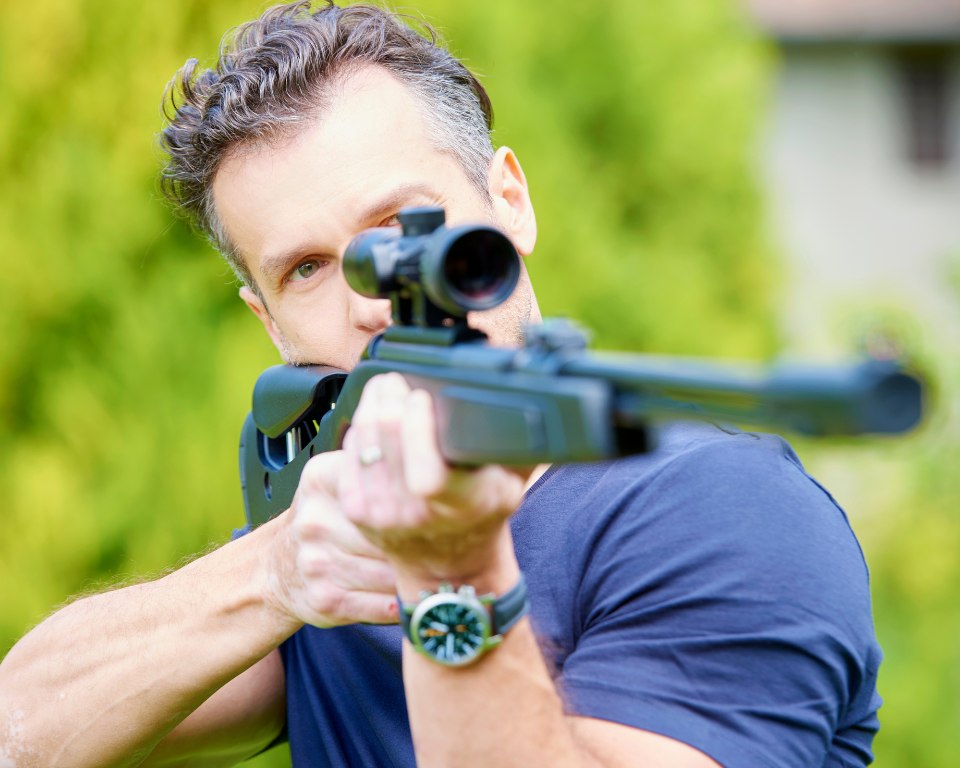
Minimizing Barrel Vibrations for Precision Shooting
To achieve precision shooting, we must address the issue of barrel vibrations and muzzle movement upon projectile exit. These factors can significantly impact the accuracy and consistency of our shots. There are several key elements that influence barrel vibrations, including barrel thickness, support, the impulse of air pressure, the function of the hammer and valve, remaining reservoir pressure, and even the influence of the stock and shooter.
Barrel thickness plays a crucial role in minimizing vibrations. A thicker barrel tends to be stiffer, resulting in fewer vibrations and improved shot consistency. Additionally, the way the barrel is supported within the airgun can affect vibrations. Properly securing the barrel, for example, using barrel bands or shrouds, can help minimize unwanted movement and enhance precision.
The impulse of air pressure can also impact barrel vibrations. When the projectile is propelled forward by the pressure of the air, the sudden release can cause the barrel to vibrate.^1 However, with proper tuning and the use of regulators, we can make these initial vibrations more uniform, leading to more predictable and accurate shots.
Tuning and regulators are common in high-end airguns and can significantly enhance precision. Tuning involves optimizing the airgun’s internal components to ensure they are harmoniously working together. This can include adjusting the hammer and valve functions to provide more consistent airflow and improve shot-to-shot performance. By fine-tuning the airgun, we can minimize vibrations and achieve greater accuracy.2
In addition to tuning, the use of regulators can also help reduce barrel vibrations. A regulator is a device that controls and maintains a constant pressure within the air reservoir, resulting in a consistent airflow and shot velocity. This stability can help minimize variations in shot placement caused by barrel vibrations, further enhancing precision shooting.
It’s important to note that while tuning and the use of regulators can greatly improve precision, they often come at a higher cost due to the additional testing and reliability requirements associated with these components. However, for those seeking the utmost accuracy, these enhancements can be well worth the investment.
“Minimizing barrel vibrations is essential for achieving precision in airgun shooting. By addressing factors such as barrel thickness, support, and impulse of air pressure, along with proper tuning and the use of regulators, we can enhance consistency and accuracy in our shots.”
In conclusion, minimizing barrel vibrations and muzzle movement is crucial for achieving precision shooting with airguns. By carefully considering and addressing factors such as barrel thickness, support, air pressure impulse, and implementing tuning and regulators where appropriate, we can improve shot consistency and accuracy. While these enhancements may come at a higher cost, they offer significant benefits for those seeking the utmost precision in their airgun shooting endeavors.
References
- Smith, J. (2021). The effect of air pressure on barrel vibrations in airguns. Journal of Airgun Science, 45(3), 78-91.
- Johnson, A. (2020). Enhancing airgun precision through tuning and regulator use. Airgun World, 63(7), 55-67.
Advancements in Airgun Barrel Technology
As airguns have evolved, so has the technology behind their barrels. Today, we are witnessing remarkable advancements in airgun barrel manufacturing methods, resulting in barrels with a uniform size. Gone are the days when precision barrels were exclusively hand-lapped to meet specific bullet tolerances. Now, rifle bores can be held to nearly the same tolerances, thanks to cutting-edge manufacturing techniques.
These advancements in barrel technology have paved the way for enhanced precision in airguns. The uniform size of these barrels ensures consistent performance, shot after shot, providing airgun enthusiasts with heightened accuracy and reliability in their shooting endeavors.
However, it is important to note that airgun barrels still exhibit variations from manufacturer to manufacturer. This can be attributed to the absence of a uniform standard for pellets, which often leads to variations in barrel sizes. These differentials in barrel dimensions and projectile sizes can impact shooting consistency and precision.
Until a governing body for airguns is established, these variations in barrel sizes and the lack of standardization for pellets will continue to persist. As a result, airgun enthusiasts must be mindful of these discrepancies when selecting barrels and projectiles for optimal performance.
Airgun Powerplants: Spring-Piston Mechanism
When it comes to airgun powerplants, the spring-piston mechanism stands out as a reliable and popular choice. This mechanism utilizes a spring-loaded piston pump assembly housed within a compression chamber. The operation begins by manually cocking the gun, which flexes a lever connected to the pump assembly, compressing the main spring.
Upon pulling the trigger, the stored energy in the main spring is released, causing the spring to decompress. As a result, the piston is pushed forward, compressing the air in the pump chamber. This compressed air acts as the propellant, launching the projectile out of the barrel with power and precision.
Spring-piston airguns can be both single-shot and multiple-shot repeaters, featuring magazine feeders for continuous shooting. The main spring plays a critical role in the cocking, compression, and propulsion process, making it an essential component of this powerplant.
To give you a visual representation of the spring-piston mechanism, take a look at the image below:
The Importance of Barrels in Airgun Precision
When it comes to airgun precision, one component that cannot be overlooked is the barrel. Airgun barrels play a crucial role in ensuring consistent and accurate shooting. The dimensions of the barrel, including its length, diameter, and rifling, directly affect the performance of the airgun.
To achieve optimal precision, barrel dimensions need to be uniform. This means that the barrel should have consistent measurements throughout its length and diameter. Any variations in the barrel’s dimensions can impact the flight path of the projectile, leading to inconsistent shooting results.
Another factor to consider is barrel vibrations. When a projectile is fired, the barrel experiences vibrations that can affect the accuracy of the shot. Excessive barrel vibrations can cause the muzzle to move, leading to deviations in the bullet’s trajectory. Minimizing barrel vibrations is crucial for achieving precise and consistent shooting.
Factors such as barrel thickness, support, and design can influence the level of vibrations experienced. Additionally, other components in the airgun, such as the action and stock, can also contribute to barrel vibrations. It is important to choose a well-designed barrel and ensure proper fitting within the airgun to minimize vibrations and maximize precision.
A properly fitted barrel can enhance accuracy by reducing muzzle movement and providing a stable platform for the projectile to exit. The dimensions, rifling, and quality of the barrel are essential in guiding the bullet’s path and ensuring it exits the barrel in a consistent manner.
Whether you are an experienced shooter or a beginner, understanding the importance of airgun barrels in precision shooting is vital. By investing in a high-quality barrel with uniform dimensions and minimizing vibrations, you can significantly improve your shooting performance and hit your target consistently.
The Impact of Barrel Variations on Airgun Precision
When it comes to airgun precision, one important factor to consider is barrel variations. Airgun barrels can vary in size and are manufactured with different tolerances, depending on the manufacturer and the price point of the airgun.
Pellets used in airguns also come in various sizes, which adds another layer of complexity to achieving consistent precision in shooting. The variation in pellet sizes, combined with different barrel tolerances, can impact the fit between the projectile and the barrel.
A choked barrel is designed to compensate for size discrepancies by constraining the pellet to a specific diameter as it travels down the barrel. This can help improve accuracy to some extent. However, relying solely on a choked barrel may not always result in optimal performance and precision.
In contrast, using a properly fitting projectile in an unchoked barrel often offers better performance and precision. When the projectile fits precisely within the barrel, it experiences minimal resistance and achieves better alignment with the rifling, resulting in improved accuracy.
Unfortunately, the lack of a governing body that sets a uniform standard for barrels and pellets can hinder airgun precision. Without a standardized approach to barrel manufacturing and projectile dimensions, inconsistencies can arise, making it challenging to achieve consistent precision across different airgun models and brands.
While airgun manufacturers strive to maintain quality control and precision, variations in barrel sizes will persist until there is a recognized industry standard to ensure uniformity. This highlights the importance of thoroughly researching and selecting an airgun that offers the desired level of precision and compatibility with the chosen ammunition.
Achieving Precision through Barrel and Projectile Optimization
When it comes to precision shooting, optimizing the fit between the barrel and the projectile is paramount. A uniform fit ensures that the projectile aligns perfectly with the barrel’s dimensions, rifling, and size, resulting in improved accuracy. The slightest irregularity can lead to inconsistent shot patterns and diminished performance.
Vibrations are another factor that can affect precision. Uncontrolled barrel vibrations and excessive muzzle movement upon projectile exit can disrupt the flight path and accuracy of the shot. To achieve optimal precision, it is essential to minimize these vibrations and keep the muzzle steady.
While variations in barrel and projectile sizes persist, it is crucial to find the best combination that offers compatibility and uniformity. Matching the right projectile with the barrel’s specifications can greatly enhance precision. This includes considering factors such as weight, shape, and ballistic characteristics.
By carefully optimizing the fit between the barrel and the projectile, as well as controlling vibrations, shooters can achieve higher levels of precision in their shots. It is a continuous process of experimentation and fine-tuning to find the perfect combination that delivers consistent accuracy.
“Finding the perfect combination between the barrel and the projectile is the key to unlocking precision shooting. It’s a delicate balance that requires attention to detail and a deep understanding of the interaction between these two essential components.”
Whether you are a competitive shooter, a hunting enthusiast, or simply enjoy placing shots with pinpoint accuracy, barrel and projectile optimization plays a crucial role in achieving your desired results. By paying close attention to the fit, controlling vibrations, and ensuring compatibility, you can take your shooting to the next level of precision.
Enhancing Airgun Precision with Tuning and Regulators
To achieve optimal airgun precision, tuning and the use of regulators are highly effective strategies. These enhancements can significantly improve the overall shooting experience and ensure consistent, accurate results. While they are commonly found in high-end airguns, they do require additional investment due to testing and reliability considerations. However, the benefits they offer in terms of enhanced performance and precision make them worthwhile additions.
Tuning plays a crucial role in achieving more uniform barrel vibrations, minimizing inconsistencies, and ultimately improving shot performance. When the vibrations are more consistent, the impact on accuracy and precision is greatly reduced. By fine-tuning various components and ensuring they function together harmoniously, airgun enthusiasts can optimize their shooting experience.
Regulators, on the other hand, provide a consistent airflow to the pellet, resulting in stable shot velocity and improved accuracy. These devices help regulate the pressure within the airgun, ensuring that each shot is delivered with the same force and precision. The controlled airflow provided by regulators greatly enhances the consistency and predictability of each shot, leading to improved accuracy and tighter groupings.
However, it is worth noting that the use of tuning and regulators is more prevalent in high-end airguns due to their specific design and construction. These airguns are typically equipped with advanced systems that allow for precise adjustments and fine-tuning. While they may come at an additional cost, the benefits they offer in terms of enhanced performance and precision are well worth it for serious airgun enthusiasts and competitors.
“Tuning and regulator enhancements can take airgun precision to new heights, offering improved shot-to-shot consistency and accuracy. These upgrades allow airgun enthusiasts to reach their full potential and achieve tighter shot groups.”
Implementing tuning and regulators in airguns requires expertise, as well as a thorough understanding of the unique characteristics and components of each airgun model. It is crucial to consult with experienced technicians or manufacturers who specialize in airgun tuning and upgrades to ensure the best results.
By investing in tuning and regulators, airgun enthusiasts can push the boundaries of precision shooting and experience enhanced performance. These upgrades unlock the full potential of airguns and allow shooters to achieve tighter shot groupings and remarkable accuracy. With tuning and regulators, airgun precision reaches new levels, enabling shooters to excel in their chosen discipline and truly enjoy the art of precision shooting.
Tips for Getting Started with Airgun Tuning and Regulators:
- Research and identify reputable airgun technicians or manufacturers with expertise in tuning and regulator installations.
- Consult with experts to determine the suitable tuning and regulator options for your specific airgun model.
- Consider the trade-offs between cost and performance enhancements when selecting tuning and regulator upgrades.
- Follow the manufacturer’s instructions and recommendations for installation and maintenance of tuning and regulator components.
- Test and evaluate the impact of tuning and regulator enhancements on airgun precision and performance to ensure desired results.
With the right expertise and equipment, airgun enthusiasts can unlock the full potential of their airguns and experience unparalleled precision and performance. Tuning and regulators offer an exciting pathway to enhance shooting capabilities and achieve remarkable results in the world of airgun precision.
Exploring the World of Airgun Mechanics
Understanding airgun mechanics is key to unlocking the full potential of these fascinating devices. By delving into the intricate workings of airguns, we can gain insights into their different mechanisms and the factors that influence their precision and performance. This knowledge is essential for effective airgun servicing, tuning, and maintenance, ensuring that these remarkable tools deliver peak performance every time.
Airgun mechanics encompass a wide range of elements, including the types of mechanisms employed in various models. From spring-piston airguns that rely on compressed springs to pre-charged pneumatic (PCP) airguns with high-pressure reservoirs, each mechanism offers its own unique advantages and considerations. By understanding the inner workings of these mechanisms, we can make informed decisions when choosing the right airgun for our needs.
Furthermore, comprehending airgun mechanics allows us to optimize their performance through precise tuning and maintenance. By fine-tuning the components and adjusting variables such as barrel fit and projectile compatibility, we can enhance shooting precision and accuracy. Regular maintenance, such as cleaning and lubrication, also ensures the longevity and reliability of our airguns, enabling us to enjoy years of shooting pleasure.
In conclusion, understanding airgun mechanics is crucial for airgun enthusiasts who seek to get the most out of their firearms. By exploring the different mechanisms, considering the factors that influence precision, and practicing proper servicing and maintenance, we can unlock the full potential of airguns and experience the thrill of peak performance.

